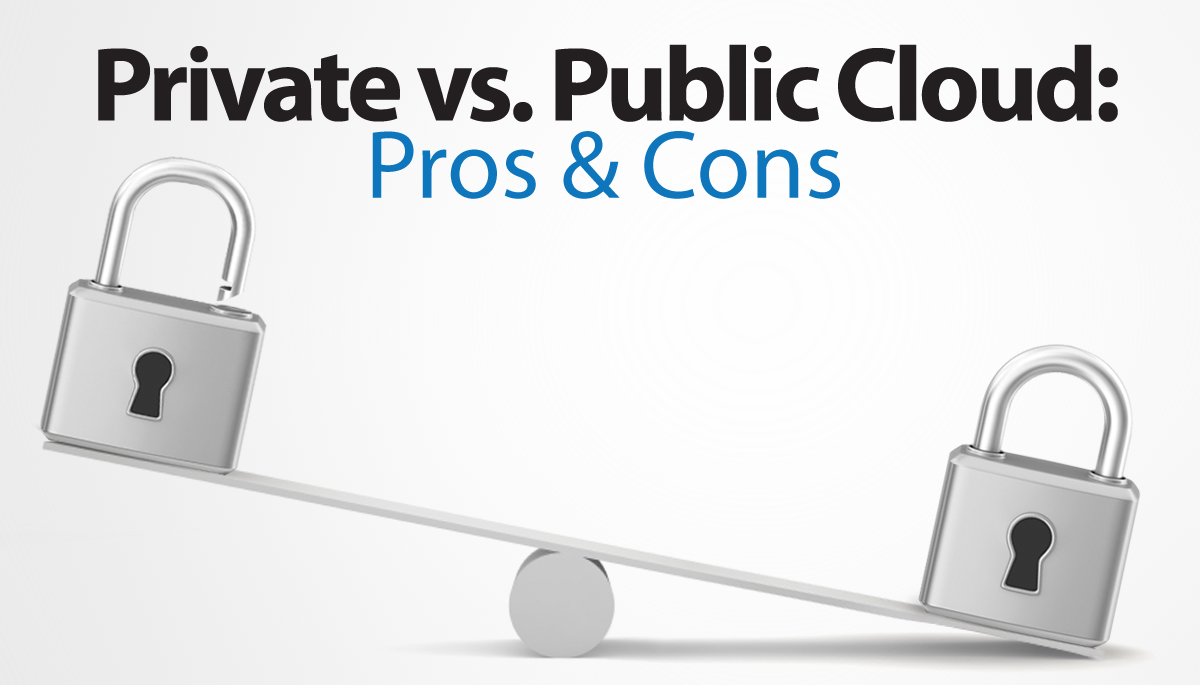-
Call Us:1.800.561.4019
Newsletter
For a Free Quote...
Latest Blog Posts
Blog Categories
Telnet Networks News
5 things to consider when weighing public cloud against private cloud
 A few years ago the only cloud game in town was the public cloud, but today private and hybrid clouds are also true contenders. In fact, private cloud implementations address a prevalent set of challenges and issues that public clouds cannot and can help speed up and smooth the way of cloud adoption.
A few years ago the only cloud game in town was the public cloud, but today private and hybrid clouds are also true contenders. In fact, private cloud implementations address a prevalent set of challenges and issues that public clouds cannot and can help speed up and smooth the way of cloud adoption.
Here are five core tenets you should assess when weighing private cloud against public cloud options:
1. Ease of Use. IT’s responsibilities lie not just in the implementation of technology, but in its ongoing operation and support. Unfortunately, from both an operation as well as a utilization perspective, new technologies tend to be a time and resource drain. Today’s public cloud technologies require IT teams learn a new vocabulary and new operational practices. Arguably, this hurdle has been one of the largest barriers for a more rapid rate of cloud adoption and the cause of much pain for those that have.
Private cloud technology stacks are building upon the promise of a simpler path to implementation and on-going operation. For private cloud to be widely adopted, IT buyers should look for simple offerings that eliminate installation and operational burdens while easing the long-term support load.
2. Security Policy Control. Data security is the most frequently voiced concern around the adoption of public cloud. While public cloud infrastructures can most certainly be effectively secured, those implementations rely on an intimate knowledge of a new security model and require consistent application against new APIs and tools.
As organizations face greater compliance pressures, they should seek solutions that provide a physical “air gap” around their cloud infrastructure. Inherently, private cloud is single tenant from the metal on up and provides a clean point of demarcation. The air gap it provides can be secured with physical security appliances, ensuring full segregation from software defined security groups and allowing for security policy to be defined one level down the stack.
This air gap eases implementation of security practices without requiring an entire re-work of the security approach, ensuring IT teams can focus their energy where it is most impactful.
3. Cost Predictability. While “pay as you go” cloud infrastructure has brought an entirely new economic consumption model to IT, many organizations become frustrated when attempting to predict how much they’ll owe at the end of the month. IT budgets are projected a year in advance, yet multi-vitiate billing methodologies make projecting capacity plans into actionable budgets a true struggle.
Furthermore, shadow IT operations and developers can cause significant budgeting challenges by running under the radar or forgetting about the instances they have running. When an unexpectedly large bill arrives at the end of the month it can cripple an IT department or organizations bottom line.
Traditional private cloud infrastructure deployed on-premise has solved this billing problem. Deployed on top of acquired hardware, traditional private cloud provides an organization with a single pool of non-elastic resources that makes budget estimates easy to calculate, but eliminates the value of pay as you go economics, and removes much of the agility that cloud infrastructures have promised.
Organizations should search for an ideal implementation that delivers a consistent and predictable billing methodology coupled with the ability to elastically add and remove resources from that capacity pool.
4. Integration with existing IT infrastructure. To stay current, many organizations have made significant investments in existing data center infrastructure, including load balancers, IDS/IPS, SAN, database infrastructure, and more. These legacy networks are often still very early in their lifespan and an investment IT departments are very hesitant to waste.
Public clouds offer the capability to directly connect to these legacy networks, but those connections often impact the economic benefits of private data centers and come with their own set of hurdles, including ease of use penalties.
On-premise private cloud, with its flexible configuration capabilities, has historically been touted as an easier way to bridge this legacy infrastructure with modern cloud environments. Yet these on-premise offerings miss the benefits of elastic infrastructure and still require capital spending.
With the addition of provider-based direct connect, organizations should now consider the possibility of deploying hosted private cloud infrastructure still integrated within this on-premise equipment. In this scenario, capacity management is the responsibility of the provider eliminating the capital expenditures for initial infrastructure builds and ongoing physical scaling while delivering the benefits of directly connected cloud infrastructure and ensuring elastic capabilities.
5. Elastic Capabilities. One of the primary benefits of cloud infrastructure is its elastic capabilities. Public cloud providers validated this as a highly demanded characteristic. Yet elastic capabilities within private cloud technology stacks have been elusive.
With traditional on-premise private cloud, delivering elasticity creates a unique challenge as capacity is governed solely by the infrastructure an organization has deployed. Adding capacity to on-premise private cloud is a drawn-out process involving finance, procurement, data center operations and IT and can often be measured in weeks or months.
Enterprise IT buyers are searching for providers who can deliver on the top four characteristics of private cloud infrastructure, but also deliver elastic resources and pricing.
It’s important to remember, this isn’t a zero sum game and organizations can and should ultimately use a combination of private, hosted private and public infrastructure. Each addresses certain business needs and use cases, and when combined truly deliver on the promise of the cloud.
Thanks to Network World for the article.
When you subscribe to the blog, we will send you an e-mail when there are new updates on the site so you wouldn't miss them.





Comments